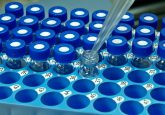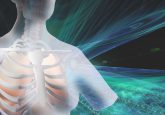Rapid identification of biomarkers achieved from single drop of blood or urine.
Researchers at Purdue University (IN, USA) have developed a new technique that can detect drugs and monitor certain medical conditions using a single drop of biological fluid.
A single drop of urine or blood may now be all that is needed to detect the presence of drugs and monitor various medical conditions. New technology developed by researchers at Purdue University (IN, USA) uses a novel ‘slug flow microextraction’ method. A small number of target molecules are extracted from a specimen of biological fluid, such as blood or urine, and a mass spectrometer is then used to analyze the extracted sample.
Conventional laboratory methods can take up to a few days to produce data, and often follow a complex sequence of steps. However, the new technique can yield results within minutes. Zheng Ouyang, a member of the research team from the Weldon School of Biomedical Engineering at Purdue University, commented: “We’ve converted a series of operations into a single extraction process requiring only a pinprick’s worth of blood.”
Microextraction is not a novel technique and has been used for several other applications, such as food analysis. However, the researchers at Purdue believe that this is the first time it has been applied to a biological sample for subsequent analysis by MS. The team suggests the new technology could have a number of different applications: steroid screening in professional sports; therapeutic drug monitoring; monitoring enzyme function; and testing for illicit drugs.
The novel method first draws a specimen of biological fluid into a glass capillary containing ethyl acetate. Gentle agitation of the capillary causes a small quantity of the target molecules to cross the interface between the two immiscible liquids and pass into the solvent layer. The desired biomarkers are thus extracted from the fluid sample, making it possible to “leave the junk behind,” as Ouyang explained. The ethyl acetate containing the target molecules is then ionized with a high-voltage current to facilitate analysis by MS.
The research was carried out using a conventional laboratory mass spectrometer, but using a new method called nano-ESI. This technique does not require a vacuum chamber as the ionization step occurs in the air or directly on surfaces. The nano-ESI technique could possibly be employed in combination with a new miniature mass spectrometer, which was also developed at Purdue University. The machine, known as the Mini 12, is 12.5 inches wide and 16 inches high. If successfully combined, these new technologies may allow a mobile testing system that could be used by medical professionals, researchers and law enforcement officers.
Commenting on the research published online in Angewandte Chemie International Edition, Ouyang stated: “This will bring a new class of compact medical instruments.”
Source: New technique yields fast results in drug, biomedical testing; Ren Y, McLuckey MN, Liu J, Ouyang Z. Direct mass spectrometry analysis of biofluid samples using slug-flow microextraction nano-electrospray ionization. Angew. Chem. Int. Ed. doi:10.1002/anie.201408338 (2014) (Epub ahead of print).





